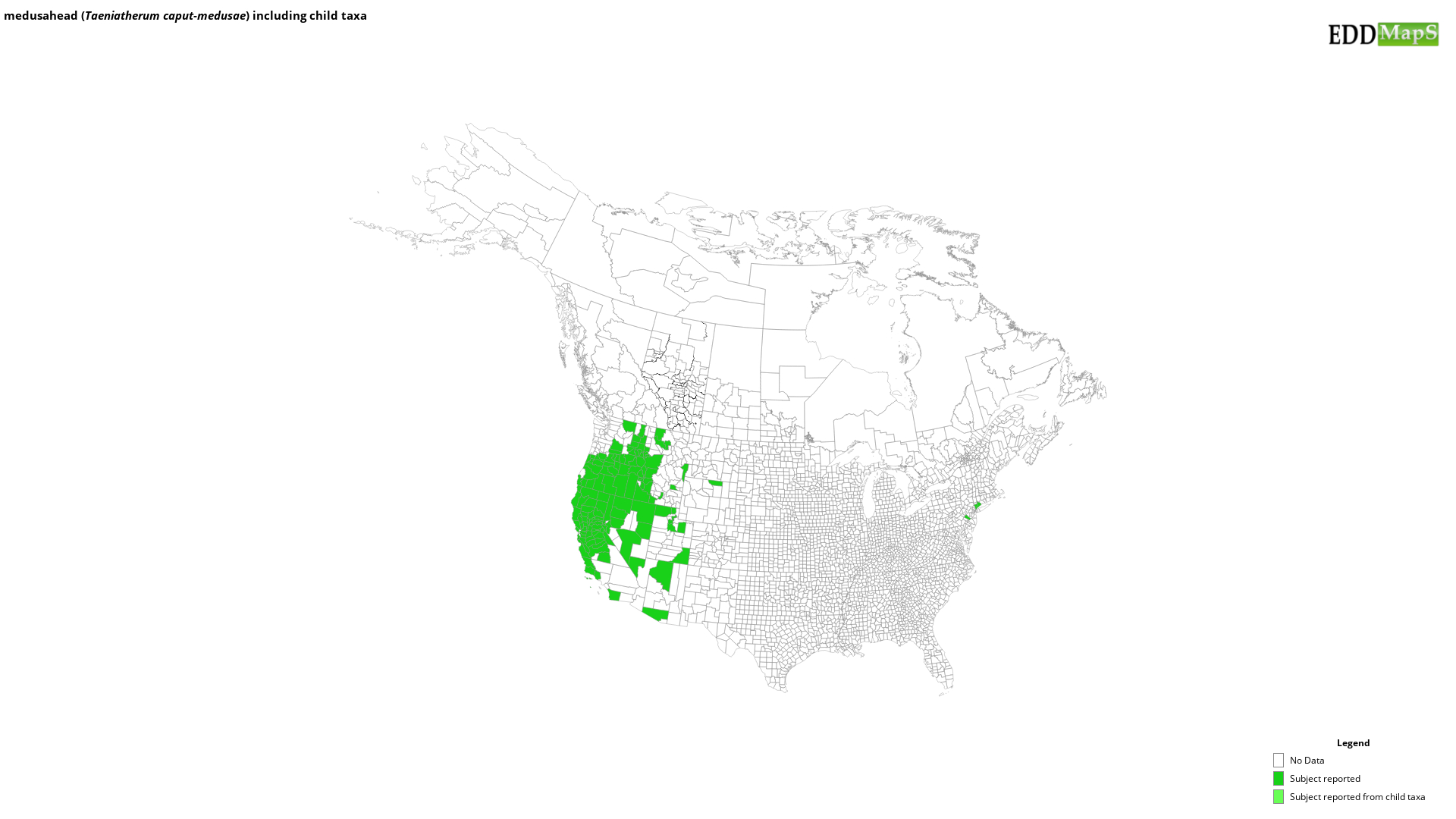medusahead
Taeniatherum caput-medusae (L.) Nevski
Overview
- Appearance
- Taeniatherum caput-medusa is an annual grass that is 8-24 in. (20.3-61 cm) tall and has distinct bristly seed heads and few leaves.
- Foliage
- Leaves are less than 0.13 in. (0.32 cm) wide. One or more stems arise from the base of the plant and can be as much as 2 ft. (0.6 m) tall. Each stem produces a single, short, spike-type seed head.
- Flowers
- Flowering occurs in late spring, when flower heads develop at the apex of the stems. Flowering occurs in late spring and early summer.
- Fruit
- The seed heads are what distinguish this plant from other annual grasses. Awns twist as they dry, hence the common name "medusahead". The longer of the two awns in each spikelet is barbed. These barbs catch on fur or clothing and spread seed.
- Ecological Threat
- T. caput-medusa was first collected in Oregon, in 1887. Plants invade dry, open lands with frequent disturbance such as fields and pastures. It is native to the Mediterranean.
Resources
- Fire Effects Information System - USDA Forest Service
- Element Stewardship Abstract - The Nature Conservancy
Selected Images
Maps
EDDMapS Distribution - This map is incomplete and is based only on current site and county level reports made by experts, herbaria, and literature. For more information, visit www.eddmaps.org
State List - This map identifies those states that list this species on their invasive species list or law. For more information, visit Invasive.org
Invasive Listing Sources
- Alberta Weed Control Act
- California Invasive Plant Council
- California Noxious Weeds
- Colorado Noxious Weeds
- John Randall, The Nature Conservancy, Survey of TNC Preserves, 1995.
- Montana Noxious Weeds
- Native Plant Society of Oregon, 2008
- Nevada Noxious Weeds
- Oregon Noxious Weeds
- Pacific Northwest Exotic Pest Plant Council, 1998
- Utah Noxious Weeds - Control
- Washington Noxious Weeds
- WeedUS - Database of Plants Invading Natural Areas in the United States
- Wisconsin Noxious Weeds
- Wisconsin's Invasive species rule – NR 40
- Wyoming Noxious Weeds
Taxonomic Rank
| Kingdom: Plantae |
| Phylum: Magnoliophyta |
| Class: Liliopsida |
| Subclass: Commelinidae |
| Order: Cyperales |
| Family: Poaceae |
| Genus: Taeniatherum |
| Subject: Taeniatherum caput-medusae (L.) Nevski |
Synonyms and Other Names
Other Common Names:
medusahead rye
Related Scientific Names:
Elymus caput-medusae L. (Synonym)
Taeniatherum asperum auct. non (Simonkai) Nevski (Synonym)

